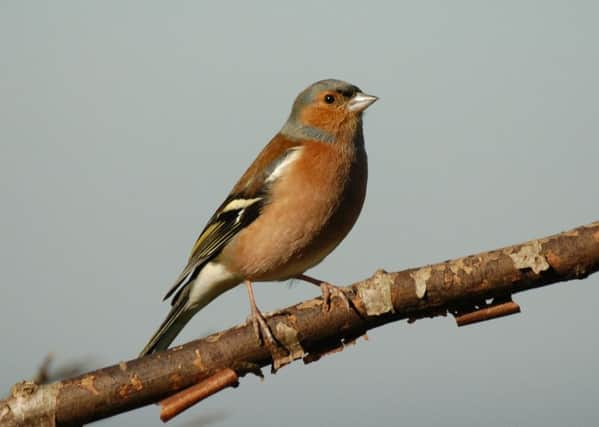Count on farmers to make sure that Scottish songbirds keep their habitats


On the platform were George Monbiot, journalist and environmental activist; Dame Helen Ghosh, Director General of the National Trust; Minette Batters, Deputy President of the NFU; and Guy Poskitt, farmer.
This was always going to be an informative and engaging discussion. Monbiot had said, and said again on the day, that “sheep are a fully automated system for environmental destruction”. He also said in a recent paper that “our bare hills are an artefact of three principal activities, sheep, deer stalking and grouse shooting”.
Advertisement
Hide AdAdvertisement
Hide AdThere is a lot we could take issue with in those statements; also the fact that one approach he advocates towards environmental management is simply to do nothing.
Minette Batters, when challenged as to whether she thought large amounts of money should continue to be paid to landowners under a new regime, responded quite rightly that it all depended on what payments were for. The comment was also made that payments should be seen as investment, not subsidy.
And there is the crux of the discussion. There is no denying that we need to farm to provide food and, whatever happens post Brexit, there will need to be some transitional measures so that thousands of farmers do not immediately go to the wall. But there are a whole host of questions still to be answered, not least, should farmers be paid for what they do, including enhancing the environment, rather than be penalised for what they don’t do as is the case in New Zealand? Should there be a limit to the subsidy received? Should that subsidy cover food production at all or should it purely be for green measures? And how big should the pot be – it currently stands at around £3 billion per annum.
The Game & Wildlife Conservation Trust (GWCT) in Scotland now has a demonstration farm at Auchnerran, and a 1,200-ewe sheep flock. The Trust is an active farmer. One of our objectives at Auchnerran is to show that it is possible to run a profitable upland sheep enterprise and enhance biodiversity in tandem. We have now just completed our second full year there and it is too early to report how things are progressing. However, the CAP (Common Agricultural Policy) and its future is very much an issue for us, whether in support of the farming enterprise or the environmental measures supported through the Scottish Rural Development Programme, so we will be watching with interest as plans and policies for what happens next unfold.
Part of what we have been doing at Auchnerran is a baseline assessment of what there is on the farm by way of wildlife, and we appear blessed with significant numbers of waders – lapwing, curlew and woodcock – among many other species.
Farmland birds provide a barometer of how we achieve a balance between farming and food production and the GWCT’s annual Big Farmland Bird Count takes place again across the UK between 3 and 12 February. During that time we are asking farmers to record and report what species of birds and how many of them they see on their farms. The results also provide an indication of whether farmland bird numbers are in decline or if the conservation efforts of farmers are succeeding. Farmers and gamekeepers are responsible for managing the largest songbird habitat in the UK, but often their efforts are unrecorded and the Big Farmland Bird Count gives farmers the chance to show what their conservation efforts are delivering.
Such measures include planting and maintaining hedges, leaving field margins sown with grasses such as cocksfoot and timothy, tussocky strips providing both cover and food for birds, and mixed woodland and woodland edges.
Farmers have an important part to play in terms of making habitat available, and for those farms with shoots there is huge benefit for them too. There are vital links between all these elements – hedges, field margins and farm woodland, as well as with the crops being grown on the farm. Pollinators also require encouragement since their decline and a poor wild berry crop can result in an associated decline of farmland birds.
Advertisement
Hide AdAdvertisement
Hide AdIn Scotland last year the count took place on 55 farms covering a total 35,700 ha, with 120 different species reported. The Scotland count featured 23 Red List species, with five of these in the top 20 – house sparrow (11), starling (16), tree sparrow (17), yellowhammer (18) and fieldfare (20).
The top 10 farmland bird species reported overall last year were blackbird (1), woodpigeon (2), robin (3), blue tit (4), chaffinch (5), buzzard (6), pheasant (7), carrion crow (8), great tit (9) and jackdaw (10).
Dr Dave Parish, Senior Scientist, Scottish Lowland Research, Game & Wildlife Conservation Trust. For more information about the 2017 Big Farmland Bird Count see www.gwct.org.uk/farming/big-farmland-bird-count